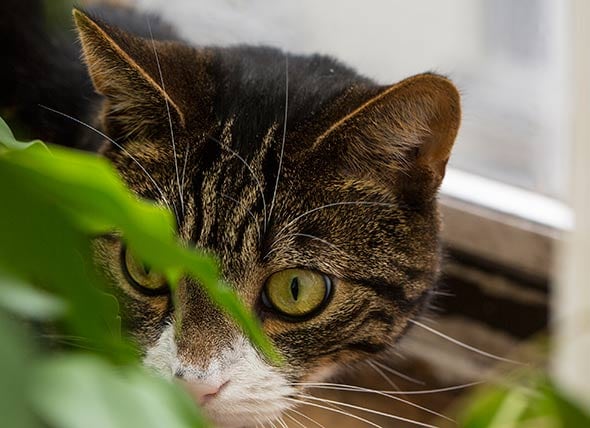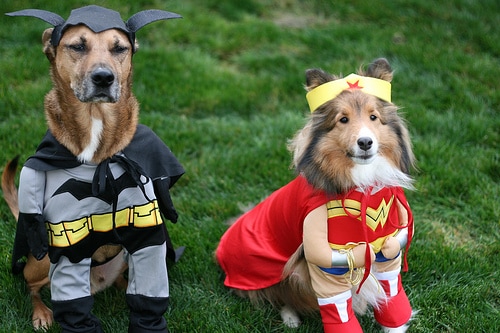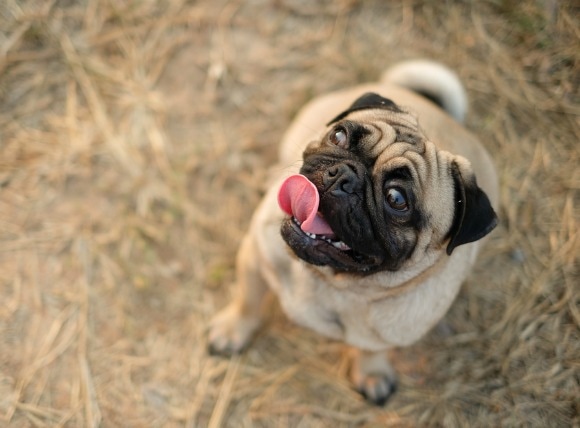
By David F. Kramer
It doesn’t take a devoted cat or dog person to let you know just how different these two species are—the signs are all around us. While dogs are considered “man’s best friend” and have been domesticated, the social contract between cats and people has a few gray areas. It’s as if cats considered our offer of being fed and having a warm place to sleep and answered, “Ok, we’ll take care of the rodents, but as for the rest of that stuff—you’re on your own.”
Check out all the latest PetSmart coupon codes, promo codes & discounts for 2016. ... PetSmart Promo Codes & Printable Coupons. , Dog Grooming Deals.
While we might view photographs and artwork containing dogs as the picture of domesticity, images of felines often seem to have the auspices of a wild predator lurking just beneath the surface. In our modern world, we’ve indeed taken the cat out of the jungle (or desert, to be precise), but we haven’t been as successful in taking the jungle out of our cats. Whether your cat is always crouched in a corner waiting to attack your feet as your walk by or bringing the spoils of an outdoor hunt to your welcome mats and carpets (or to your bed!), even the cutest moggy is a little wild-at-heart.
Cats love to hunt. They love to stalk, chase, and catch. And having a constantly filled food dish doesn’t seem to quell this desire one bit. For cats living indoors, where wild game is scarce, many will go for the next best thing: insects.
Why Do Cats Chase Bugs?
Chasing bugs is a lot more fun than a feather tied to a stick or a ball with a bell inside. Such cat toys don’t speak to the “inner panther” in your cat the way that a living creature desperate to preserve its life does, so it’s not surprising that cats just plain love hunting insects. But is this practice harmful to a cat’s health?
According to Dr. Meghan Herron, veterinarian and clinical assistant professor of behavioral medicine at Ohio State University, hunting often has little to do with hunger.
“[Small numbers of] insects don't provide a major protein source, which is what cats need to eat to survive, as they are ‘obligate carnivores.’”
The term obligate carnivore, or true carnivore, is defined as an animal that must eat animal source or protein to survive. Other mammals that are obligate carnivores exist on both the land and in the sea, and include minks, tarsiers, dolphins, seals, sea lions, and walruses. Non-mammal obligate carnivores include rainbow trout, salmon, hawks, eagles, crocodilians, and many snakes and amphibians.
Compared to other mammals of a similar size, cats have a vastly shorter intestinal tract. Raw meat requires very little in the way of digestion (in comparison to grass, for example) to draw out essential nutrients, and over time cats have lost the ability to process carbohydrates that come from plant matter and other sources.
Cats require a high amount of protein to survive, and they get the sugars they need primarily via gluconeogenesis, which utilizes protein, rather than carbohydrates, to make glucose. Pet owners who are vegetarian or vegan sometimes opt to mimic their diet for their pets. While a dog might survive, or possibly even thrive, on a vegetarian diet, this is a downright dangerous diet for cats unless it is heavily fortified and should be avoided. Pet owners who are vegetarian need to accept the fact that their pets’ diets aren’t a matter of conscience or a lifestyle choice—they’re simply nature designed and need to be respected.
So, this bug hunting phenomenon seems to have its basis in behavior and not biology.
“Mostly, I think the chasing and eating of bugs is both fun and instinctual, as bugs are quickly moving small things and cat’s brains are programmed to chase,” says Dr. Herron. “Since they are not quite as well domesticated as their canine counterparts, this innate desire to hunt and practice predatory behavior through play is still quite active in domestic cats.”
But can eating bugs make your cat sick?
Internal Parasites in Bugs
“Internal parasites are not a [big] concern with ingestion of insects,” says Dr. Katie Grzyb, DVM. “The danger from ingesting insects is very small.”
Some types of insects can carry parasites that are able to infect cats, likePhysaloptera, or stomach worm, but these cases are few and far between.
Bugs may also have an irritant effect on the gastrointestinal tract of cats. Vomiting and/or diarrhea is the common result. If it is severe or doesn’t resolve on its own in a day or two, make an appointment with your veterinarian.
But Dr. Grzyb adds that “mites and fleas certainly can become a problem when theyinfest or live on the coat of a feline. Fleas can carry tapeworms, which are transmitted when they bite the feline. Also, ticks can carry tick borne diseases to animals when they bite and attach to an animal.”
There may be more to worry about when it is the bug that is doing the biting. “Bee stings and spider bites certainly can cause an allergic reaction, localized or anaphylactic, which often needs to be treated by a veterinarian.”
Do Pesticides Make Bugs Poison to Cats?
We do our best to keep insects on the outside, and many of us turn to insecticides to combat bugs inside the house. Since these poisons need to be ingested to be effective, and because the purpose of many of these products is to have a wandering insect bring the substance back to the nest to kill en masse, pet owners might be concerned about the effect that eating a poisoned insect could have on their pets. As it turns out, in most cases there isn’t any need to worry.
“The dying bugs have such a low amount of toxin that it is very unlikely that an owner will see any side effects in their pet.” says Dr. Grzyb.
Still, when pet owners are going to use any type of chemicals around the home, insecticides or otherwise, a little research is always your best bet. In other words, read the label.
“When using insecticides it is pertinent to make sure that the owner reads the label to make certain there are no pyrethrins or pyrethroids, as [high concentrations of] these can cause severe tremors, elevated temperature, and seizures in some felines,” says Dr. Grzyb.
“I have seen many cases of roach bait ingestion, which almost never causes any side effects in cats; possibly mild gastrointestinal signs, but that’s all. Rodenticide is another story.”
“If an owner thinks that their animal has ingested an insecticide, I recommend contacting their local veterinarian or a Poison Control Hotline, such as the ASPCA,” says Dr. Grzyb. “It is helpful for the owners to have as much information about the product when contacting these sources, such as the bottle in hand to read off active ingredients.”
Do Cats Miss Hunting?
Do our cats miss the daily hunt for game and bugs just happen to serve as a handy replacement for this instinct? Or is it just kittenish behavior that persists over the life our cats?
“Yes, I do believe that cats use insects as a substitute for hunting. Kittens in general are more playful so they may seem to ‘hunt’ more often, but it is really just play time,” says Dr. Grzyb.
“If you watch cats, they oftentimes won't even ingest the insect; they will hunt, bat, and place them in their teeth, but oftentimes will not swallow it. So, though we will likely never know for sure, domesticated cats seem to be hunting to pass the time.”
So, while your cat’s bug-hunting might be bad news for the insects in your home, it all comes down to cats being cats—staying wild-at-heart and having fun while they’re at it.
This article was reviewed for accuracy by Dr. Jennifer Coates, DVM.



